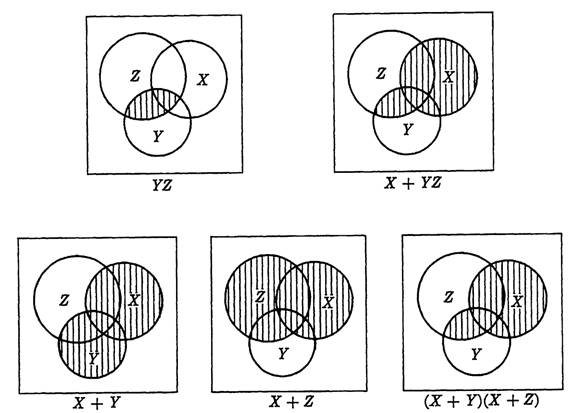

تاريخ الرياضيات

الاعداد و نظريتها

تاريخ التحليل

تار يخ الجبر

الهندسة و التبلوجي


الرياضيات في الحضارات المختلفة

العربية

اليونانية

البابلية

الصينية

المايا

المصرية

الهندية


الرياضيات المتقطعة

المنطق

اسس الرياضيات

فلسفة الرياضيات

مواضيع عامة في المنطق


الجبر

الجبر الخطي

الجبر المجرد

الجبر البولياني

مواضيع عامة في الجبر

الضبابية

نظرية المجموعات

نظرية الزمر

نظرية الحلقات والحقول

نظرية الاعداد

نظرية الفئات

حساب المتجهات

المتتاليات-المتسلسلات

المصفوفات و نظريتها

المثلثات


الهندسة

الهندسة المستوية

الهندسة غير المستوية

مواضيع عامة في الهندسة

التفاضل و التكامل


المعادلات التفاضلية و التكاملية

معادلات تفاضلية

معادلات تكاملية

مواضيع عامة في المعادلات


التحليل

التحليل العددي

التحليل العقدي

التحليل الدالي

مواضيع عامة في التحليل

التحليل الحقيقي

التبلوجيا

نظرية الالعاب

الاحتمالات و الاحصاء

نظرية التحكم

بحوث العمليات

نظرية الكم

الشفرات

الرياضيات التطبيقية

نظريات ومبرهنات


علماء الرياضيات

500AD

500-1499

1000to1499

1500to1599

1600to1649

1650to1699

1700to1749

1750to1779

1780to1799

1800to1819

1820to1829

1830to1839

1840to1849

1850to1859

1860to1864

1865to1869

1870to1874

1875to1879

1880to1884

1885to1889

1890to1894

1895to1899

1900to1904

1905to1909

1910to1914

1915to1919

1920to1924

1925to1929

1930to1939

1940to the present

علماء الرياضيات

الرياضيات في العلوم الاخرى

بحوث و اطاريح جامعية

هل تعلم

طرائق التدريس

الرياضيات العامة

نظرية البيان
THE ALGEBRA OF SETS-Venn diagrams
المؤلف:
J. ELDON WHITESITT
المصدر:
BOOLEAN ALGEBRA AND ITS APPLICATIONS
الجزء والصفحة:
5-6
10-1-2017
1978
A formal presentation of Boolean algebra, which will be given in Chapter (BOOLEAN ALGEBRA), begins with a description of the symbols to be used and a statement of the axioms which it is assumed the symbols satisfy. Upon this foundation, a framework of theorems and definitions is constructed which becomes a mathematical model to be used in any application which the model seems to fit. The validity of the results obtained from the application depend upon the closeness with which themodel fits the practical situation.
In THE ALGEBRA OF SETS, however, a different approach to Boolean algebra has been adopted. An application has been considered first, with the hope that the reading will be more pleasant and to provide a strong motivation for the axiomatic treatment to follow. This approach has its weaknesses, of course.
The greatest is that we have no formal basis upon which to build precise proofs. Since there are no axioms to employ in writing proofs, we must rely upon an intuitive notion of the meanings of terms like "set" and "element." To strengthen this intuition and provide some justification for the basic laws which are valid in the algebra of sets, we shall introduce the concept of a Venn diagram. It should be remembered that such diagrams do not constitute proofs, but rather represent illustrations which make the laws seem plausible.
In a Venn diagram the set of points interior to a rectangle is taken as the universal set. Arbitrary sets within the universal set are represented by the sets of points interior to circles (or other closed regions) within the rectangle. If nothing specific is known about the sets involved, these circles are drawn so that all the possibilities of intersections among the sets are represented. By shading appropriate areas, all combinations of the sets can be represented graphically.
As an illustration of the usefulness of Venn diagrams, consider Fig. 1-1, representing two sets X and Y which have a nonzero intersection. In this

FIG. 1-1. A Venn diagram involving sets X and Y.
figure X', the complement of set X, is shaded with horizontal lines, and Y' is shaded with vertical lines. The set X'Y' appears as the crosshatched area, which is clearly the complement of X + Y. Thus we have illustrated a basic law, that (X + Y)' = X'Y'. In the figure, the unshaded area represents X Y, which is clearly the complement of X' + Y', the area shaded either with horizontal lines, or vertical lines, or both. This illustrates a second basic law, namely, that (XY)' = X' + Y'.
As another illustration, consider Fig. 1-2, which illustrates the law X + YZ = (X + Y) (X + Z). This diagram is constructed in steps to show more clearly how the required sets are determined. The diagrams are self-explanatory.

FIG. 1-2. Venn diagrams for the law X + YZ = (X + Y)(X + Z).
 الاكثر قراءة في الجبر البولياني
الاكثر قراءة في الجبر البولياني
 اخر الاخبار
اخر الاخبار
اخبار العتبة العباسية المقدسة

الآخبار الصحية















 قسم الشؤون الفكرية يصدر كتاباً يوثق تاريخ السدانة في العتبة العباسية المقدسة
قسم الشؤون الفكرية يصدر كتاباً يوثق تاريخ السدانة في العتبة العباسية المقدسة "المهمة".. إصدار قصصي يوثّق القصص الفائزة في مسابقة فتوى الدفاع المقدسة للقصة القصيرة
"المهمة".. إصدار قصصي يوثّق القصص الفائزة في مسابقة فتوى الدفاع المقدسة للقصة القصيرة (نوافذ).. إصدار أدبي يوثق القصص الفائزة في مسابقة الإمام العسكري (عليه السلام)
(نوافذ).. إصدار أدبي يوثق القصص الفائزة في مسابقة الإمام العسكري (عليه السلام)


















